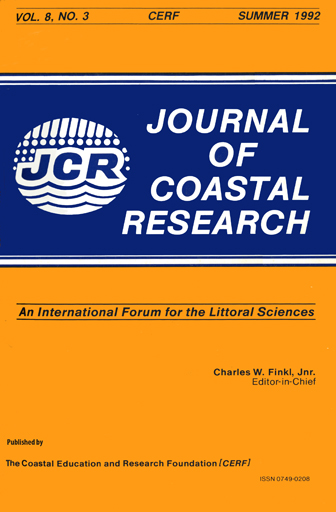Sea Cliff Retreat in Southern Portugal: Profiles, Processes, and Problems
Keywords:
Cliff retreat, coastal erosion, hazard mitigation, Portugal (Algarve)Abstract
Southern Portugal's central Algarve coast is undergoing accelerated cliff retreat due to the combined effects of sea-level rise and natural and anthropogenic erosion. Between Olhos de Agua and Quinta do Lago, 10 to 50m high red cliffs are cut into friable Miocene to Quaternary clastics. This area can be divided into three distinct zones based on natural cliff evolution and human influence. The western zone (Praia de Falesia) is characterized by continuous cliffs, 15 to 45 m high, dominated by natural erosive processes and has retreat rates on the order of 1 m/year. The middle zone cliffs (Forte Novo--Vale do Lobo) are 10 to 20 m in height, interrupted by stream mouths, and subject to retreat rates of more than 2 m/year. Human activities have caused changes, including development of the cliff upland and modification of nearby shorelines, such as at Quarteira. Locally, as much as 6.3m of retreat have occurred in a single year. The eastern zone cliffs (Quinta do Lago) are now inactive due to the formation of a protective barrier system. The cliffed zones provide a case study for contrasting the impact of shoreline protective structures and the different styles of upland development relative to the proximity of the cliff edge. Evolution of the cliff profiles shows a repetitive pattern controlled by the dominance of either marine or subaerial erosion processes, including such factors as wave conditions, storm frequency, tidal range, runoff, joint systems, lithologic heterogeneity, cliff-face position of harder and softer layers, clay content, water-rich layers, vegetation, occurrence of earthquakes, and human influences within the area (e.g., updrift jetties, groins, seawalls, digging caves, construction, vibration, and adding water). Future solutions to problems associated with cliff retreat should be based on known retreat rates, the projected sea-level rise, and the past experience of human impact on the cliffs.


